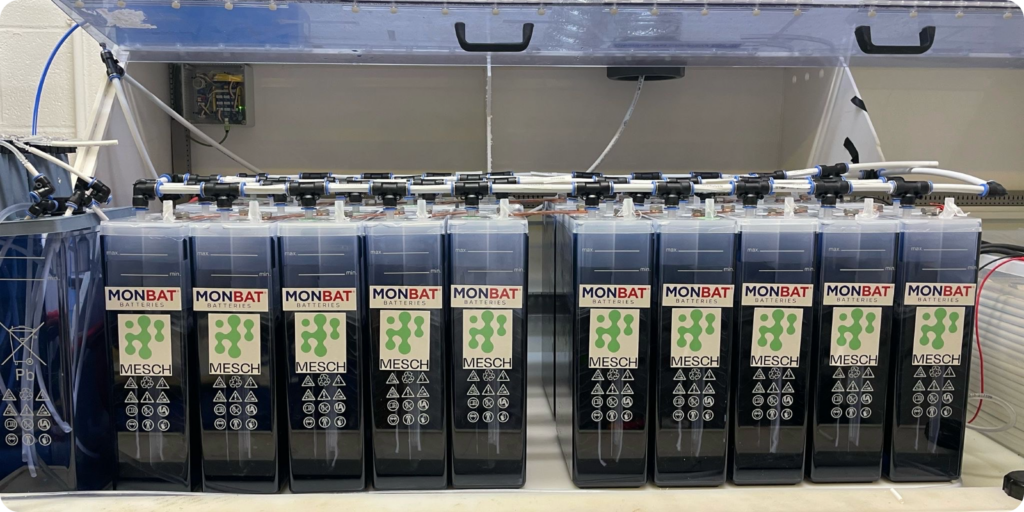Q&A: All you need to know about the MESCH project
Education
What is MESCH, and how does the system function? In this article, we address some of the most common questions about the MESCH project, including its battery-electrolyser technology, system capacity, and potential for broader application. Whether you’re new to MESCH or looking to understand the technical side, this Q&A article highlights the key points.
What is the MESCH system’s power and storage capacity?
The MESCH system comprises 160 lead battery-electrolyser cells, delivering 10.24 kWh of usable energy. This is enough to keep essential hospital systems running off-grid.
When the system is overcharged, the cells generate hydrogen, which is stored in a custom tank at low pressure. This tank can hold approximately 1kg of hydrogen when pressurised, which corresponds to roughly 33 kWh of energy. That’s sufficient for about 2-3 days of cooking at the hospital. The batteries are also designed to be efficient, with 80% charge and 72% efficiency during hydrogen production.

What type of battery technology is being tested in the MESCH system?
MESCH uses specially designed lead battery-electrolyser cells, based on a proven battery format known as OPzS. The cells include parts from Monbat and have been adapted by the Loughborough team to make them suitable for both energy storage and hydrogen production.
Each cell has a custom lid with separate outlets for collecting hydrogen and venting oxygen safely. A special separator, made from standard battery materials and some 3D-printed components, keeps the gases from mixing and supports safe operation.
Because the system uses common lead battery materials, it’s also compatible with existing recycling systems, which makes it easier to maintain and scale up in the future.
Why was hydrogen chosen as part of the MESCH solution?
In many communities, cooking still relies heavily on charcoal or firewood, causing deforestation and indoor air pollution. MESCH addresses this issue by using hydrogen, a cleaner alternative.
When hydrogen is produced using renewable electricity, it is completely carbon-free. The only waste product produced when burning hydrogen is water. By integrating hydrogen production with battery storage, MESCH provides a flexible and sustainable solution to everyday energy needs, including clean cooking, while significantly reducing environmental impact.

How do the battery-electrolyser cells support the hospital?
The MESCH system stores solar power using special battery-electrolyser cells. This energy powers essential hospital services, like lighting, keeping vaccines cold, and running medical equipment.
The system uses 160 battery cells with a combined capacity of 20.48 kWh. Around half of that is available for regular use. These cells were engineered at Loughborough University and include parts supplied by project partner Monbat.
What’s unique is that they also produce hydrogen gas (up to 19 L/min) when the batteries are fully charged. This gas can then be used for clean cooking, making the system useful for both electricity and fuel.
Can this technology be adapted for other applications?
Yes, the MESCH system is designed to be modular, which means it can be adapted beyond the hospital in Malawi. Potential applications are, for example, rural schools, clinics, and community centres, in regions where reliable energy access is still a challenge.
Because the system uses materials already found in standard battery infrastructure, it’s easier to scale and maintain. That makes it a practical option for regions with limited resources but growing energy needs.
As well as supporting communities not connected to the main electricity grid, the MESCH system can support solar or wind farms that generate more electricity than they can immediately use and stabilise electricity supply by managing variations in energy production. This flexibility allows the system to meet a wide range of energy needs effectively.
